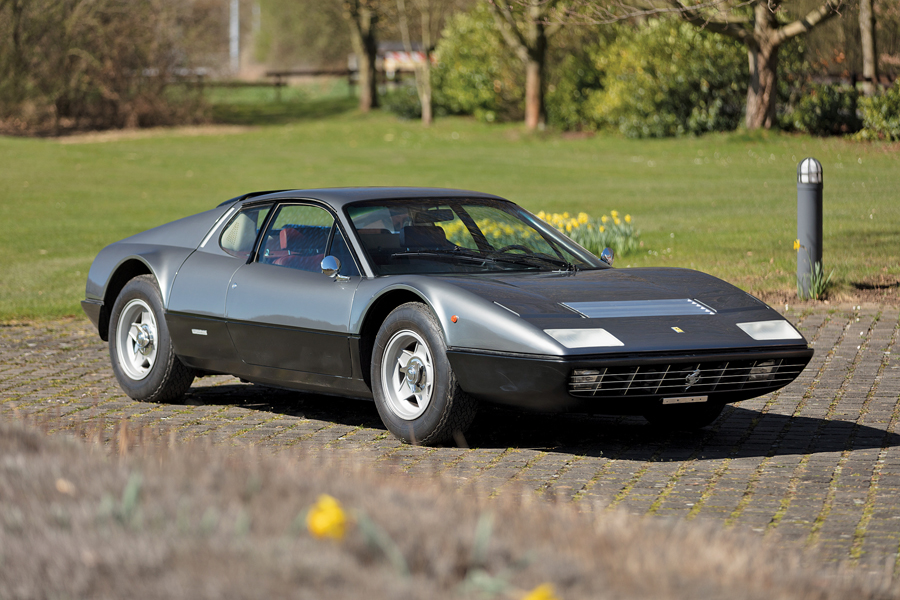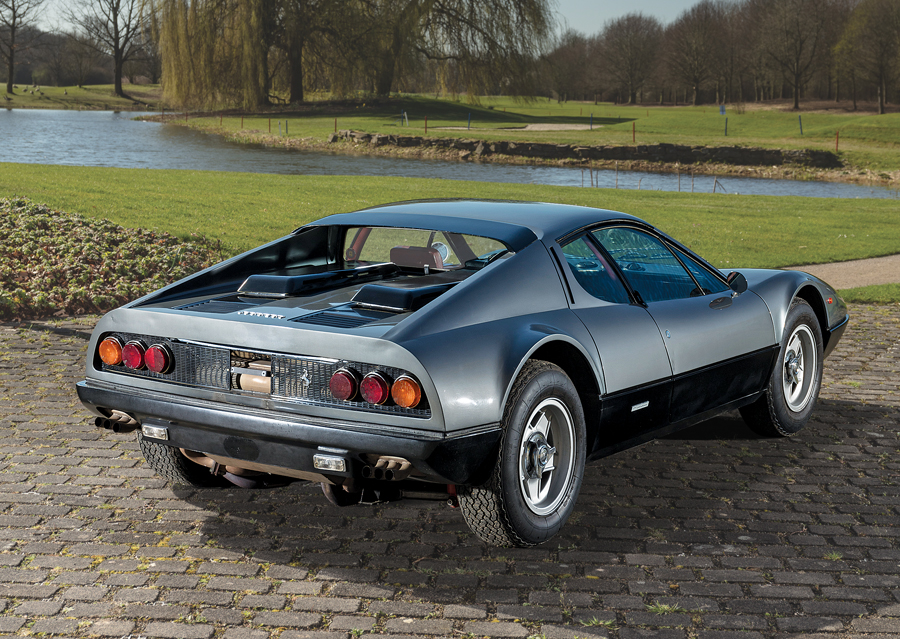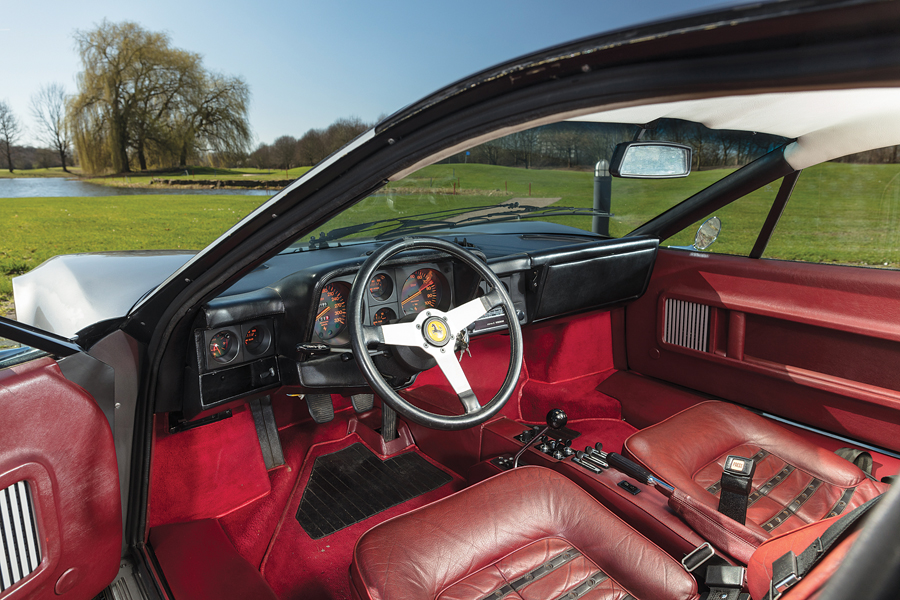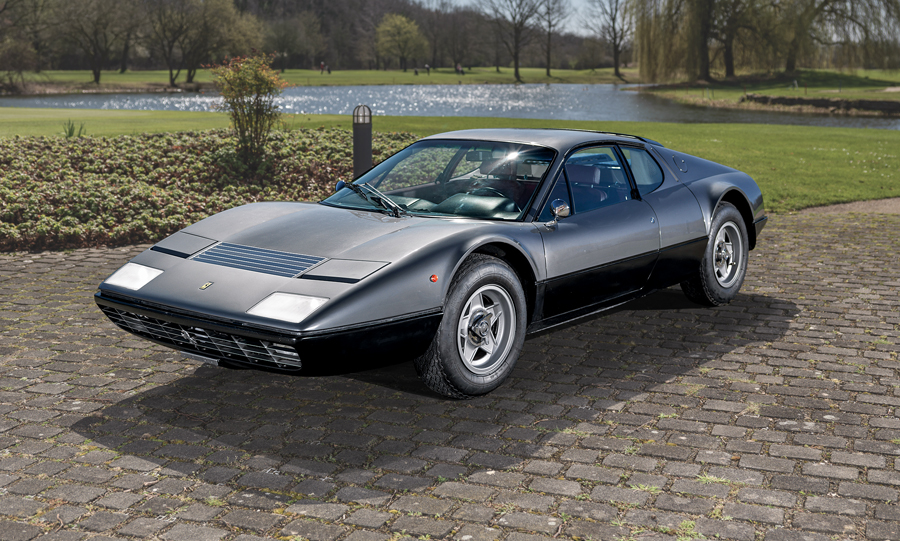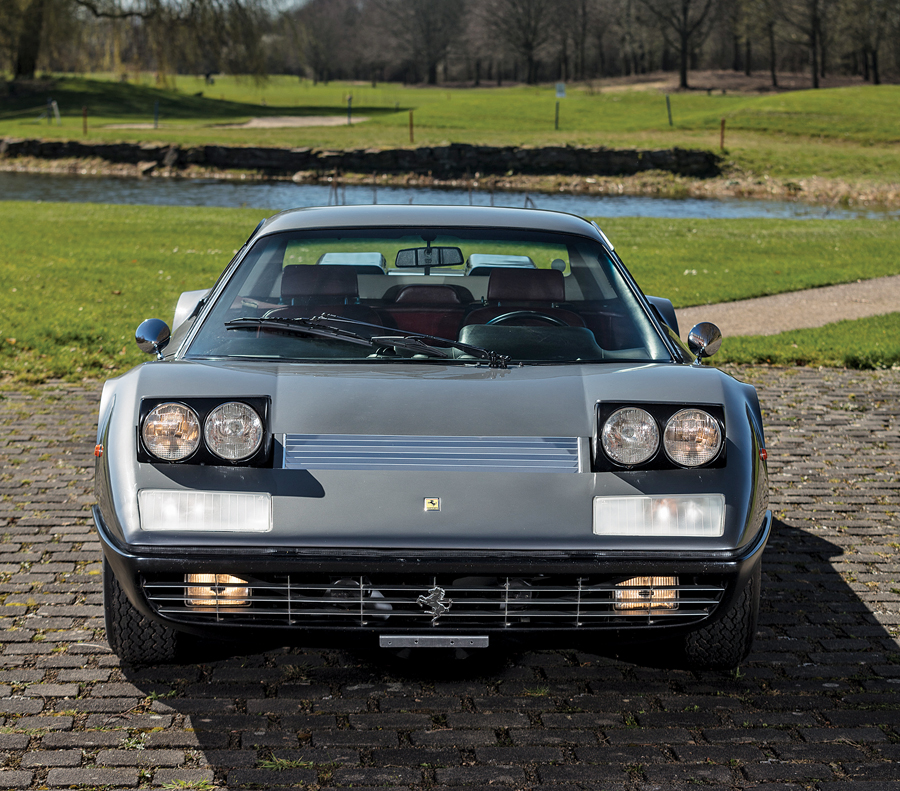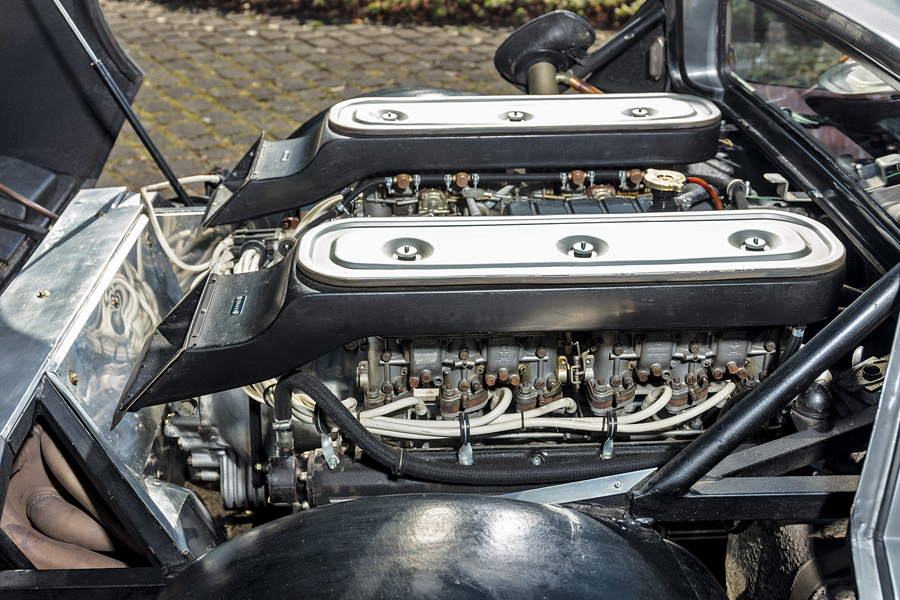- Gifted new by Enzo Ferrari to Ferrari driver and team manager Peter Schetty
- Highly original and well-preserved example with just four owners from new
- One of just five examples painted Grigio Ferro from the factory
- Highly pedigreed example of the rare 365 GT4 Berlinetta Boxer
SCM Analysis
Detailing
| Vehicle: | 1974 Ferrari 365 GT4 BB coupe |
| Years Produced: | 1974–76 |
| Number Produced: | 387 |
| Original List Price: | About $38,000 in Europe; not sold in the U.S. |
| SCM Valuation: | $405,500 |
| Tune Up Cost: | $10,000 |
| Distributor Caps: | $550 |
| Chassis Number Location: | On frame tube in engine bay |
| Engine Number Location: | Top of engine block |
| Club Info: | Ferrari Club of America |
| Website: | http://FerrariClubofAmerica.org |
| Alternatives: | 1971 Lamborghini Miura P400 SV, 1974 Maserati Bora, 1971 DeTomaso Mangusta, 1973 Porsche 911 Carrera RS |
| Investment Grade: | B |
This car, Lot 136, sold for $397,999, including buyer’s premium, at Bonhams’ Les Grandes Marques à Monaco auction on May 11, 2018, at Villa La Vigie, Monaco.
The Ferrari 365 GT4 BB, like most Ferraris, was assigned a name derived from the size of its engine and its body style. The number 365 indicates the displacement of one cylinder. Multiply 365 by 12 and you find the engine’s total displacement is 4.4 liters. GT indicates it is a Grand Touring model and 4 indicates the engine has four camshafts. The first B indicates the body is a berlinetta — Ferrari Speak for small, light coupe — and the second B announces the car has a boxer engine.
A boxer engine has a flat, or as Ferrari calls it, a 180-degree V engine block. The pistons are horizontally opposed, so they box against each other.
Boxer engines can be found in aircraft and automobiles. Volkswagen and Subaru have made good use of the configuration. General Motors put a boxer engine in the Corvair, and Porsche has engineered the configuration to within an inch of perfection.
A racing pedigree
Ferrari’s first use of a boxer engine was in 1964. Hoping the lower center of gravity of the boxer design would give Ferrari a handling advantage, Enzo Ferrari assigned Mauro Forghieri, the Ferrari engineer behind the 250 GTO, the task of designing a 1.5-liter unit to meet the current Formula One rules.
The result was the 1512 F1 — 1.5-liter F1 engine — a name later shortened to 512 F1.
The Italian Grand Prix of 1964 was an unusual show of Ferrari’s versatility. Ferrari brought five cars to the race: two V8s, two V6s, and for its debut, the new boxer-powered 512 F1. Although Ferrari decided to withdraw the still-untested 512 F1 from the race, the outing would be the first for an engine that would help Ferrari dominate racing for many years to come.
Boxer-powered F1 Ferraris would win Niki Lauda two driver’s championships and Jody Scheckter one.
Boxer-powered Ferraris won four Formula 1 Constructors’ Championships. The boxer-powered 312 PB sports racer swept 12 out of 12 of its 1972 races. The boxer-powered 212 E hillclimb car would also go unbeaten for a season.
A winning engine to the 365 GT4 BB
Ferrari passes down their racing experience to their production cars. The beneficiary of their boxer experience became the 365 GT4 BB. Prior to the 365 Boxer, all production 12-cylinder Ferraris were front-engine cars.
Enzo Ferrari did not think high-performance mid-engine cars belonged in the public domain, and he resisted the mid-engine trend other manufacturers were starting to adopt.
Positioning the wide boxer engine in the front of a car presented a significant engineering challenge, and that reason — together with marketing pressures — forced Enzo Ferrari to relent.
Pininfarina gave the boxer engine a showcase that exceeded any expectations. The Berlinetta Boxer looked like the future it was intended to represent.
Four 3-barrel Weber carburetors dominated the top of the boxer engine. The large clamshell hood that covered the engine compartment opened to reveal a view of the Webers — as well as the complete engine. A front clamshell also opened, revealing a view of the front mechanicals. When both hoods are opened simultaneously, the effect is about as dramatic as automobile design gets.
The lower front end was clean, without a spoiler or lip. The rear end had three taillights and three exhaust tips per side. It would be these features that would make the 365 Boxer distinct from later Boxers — and make them a darling of Ferrari collectors.
A short, memorable, collectible run
After just 387 editions, the 365 BB was updated to the 5-liter, carbureted 512 BB and later the 512 BBi fuel-injected models.
The 512s received the more-traditional four taillights and four-exhaust-tip configurations. They also were treated to other updates including a front spoiler that improved high-speed performance, as well as other features.
Certain Ferraris are what I call trophy cars. Some are trophies for definable reasons like their racing history — or their ownership history.
Others have become desirable due to less-definable reasons, such as styling or minor performance variations. A good example of this is the fiberglass 308 GTB. Other than the fiberglass body, there is little difference between a fiberglass and steel-body 308 GTB, yet collectors will pay nearly twice as much for a fiberglass car as a steel one.
In nearly all areas, the 512 BBs are better cars than the 365 BBs, but in the marketplace the 365 is king.
Lower production numbers give an edge to the 365, and the distinctive styling is also a plus. The 365 is thought to be a faster car, but that is probably more myth than fact.
There are valid reasons that the 365 is more desirable and justifies a higher value.
Our subject car
Judging from the auction catalog, Bonhams’ 365 GT4 BB chassis 18041 appears to be a wonderful car. The provenance could hardly be better. The color combination could be better but is not objectionable. The leather looks original and surprisingly good for the mileage.
Nothing was mentioned about when the last expensive major service was performed, but that cost is incidental at the car’s value.
Even the books and tools are claimed to be with the car.
An on-the-money sale
Not long ago, it looked like 365 Boxers were going to be half-million-dollar cars, but that train has left the station. 512 Boxers have been particularly soft lately, but the 365s seem to have held their own.
The $397,999 paid for our subject car at Monaco seemed spot-on for today’s market. Across town during the same weekend, a $393,000 bid for 365 GT4 BB chassis 17983 at RM Sotheby’s was a little shy of the low estimate and was turned down.
The seller of chassis 18041 was right to take the money. The Ferrari market moves in cycles, and it may be a few years before we see it move up again.
The buyer got a trophy and a great car. He may not see a great return on the investment, but that may not matter. The car has an excellent backstory that will no doubt be told many times over. How many Ferraris were personal gifts from Enzo himself? This car was, and that means a lot.
The buyer also got six taillights and six exhaust tips that will certainly draw a crowd. Everyone should have gone home happy. ♦
(Introductory description courtesy of Bonhams.)
